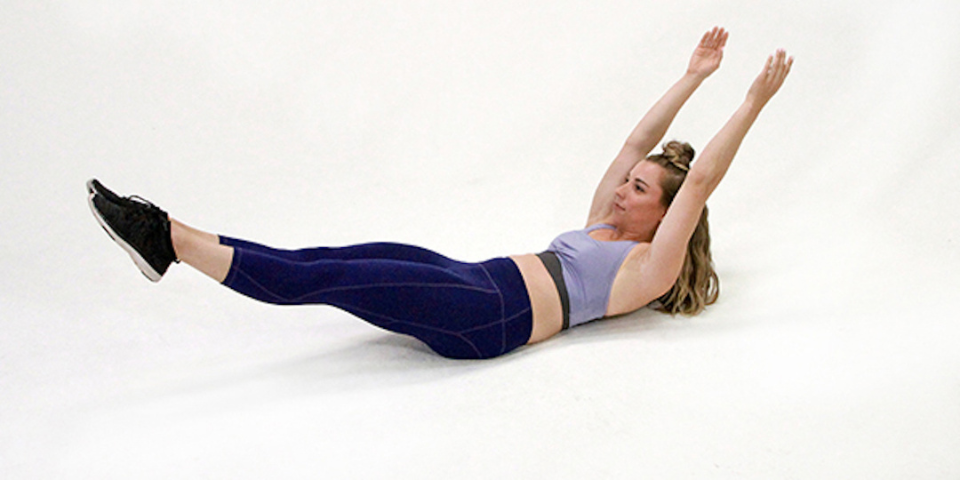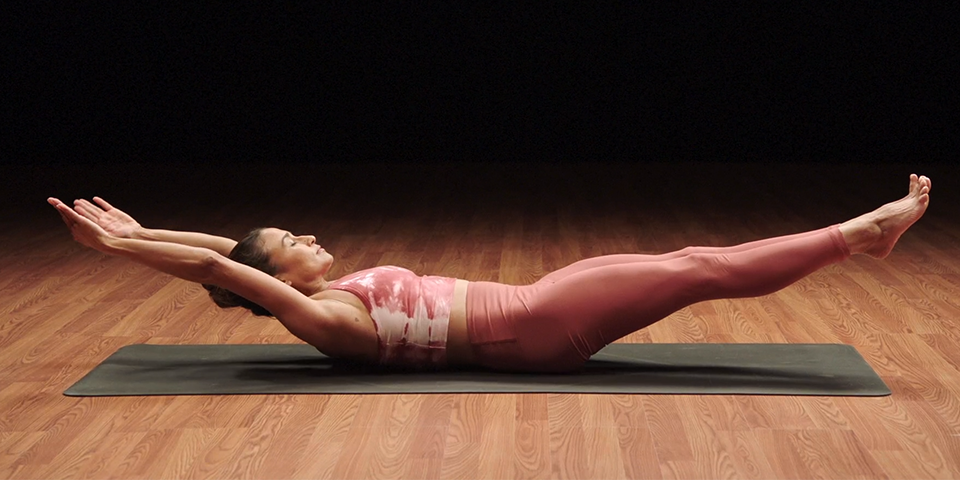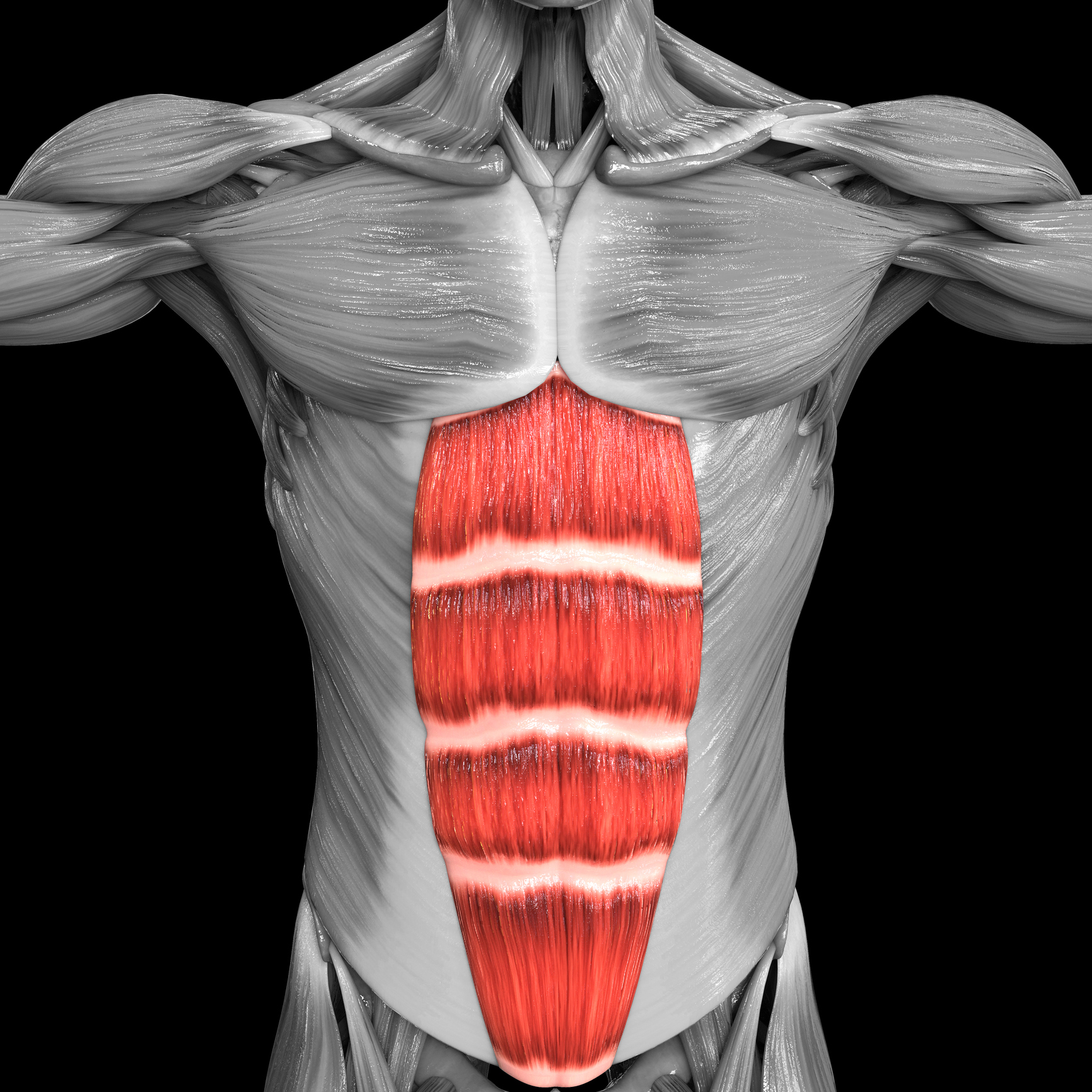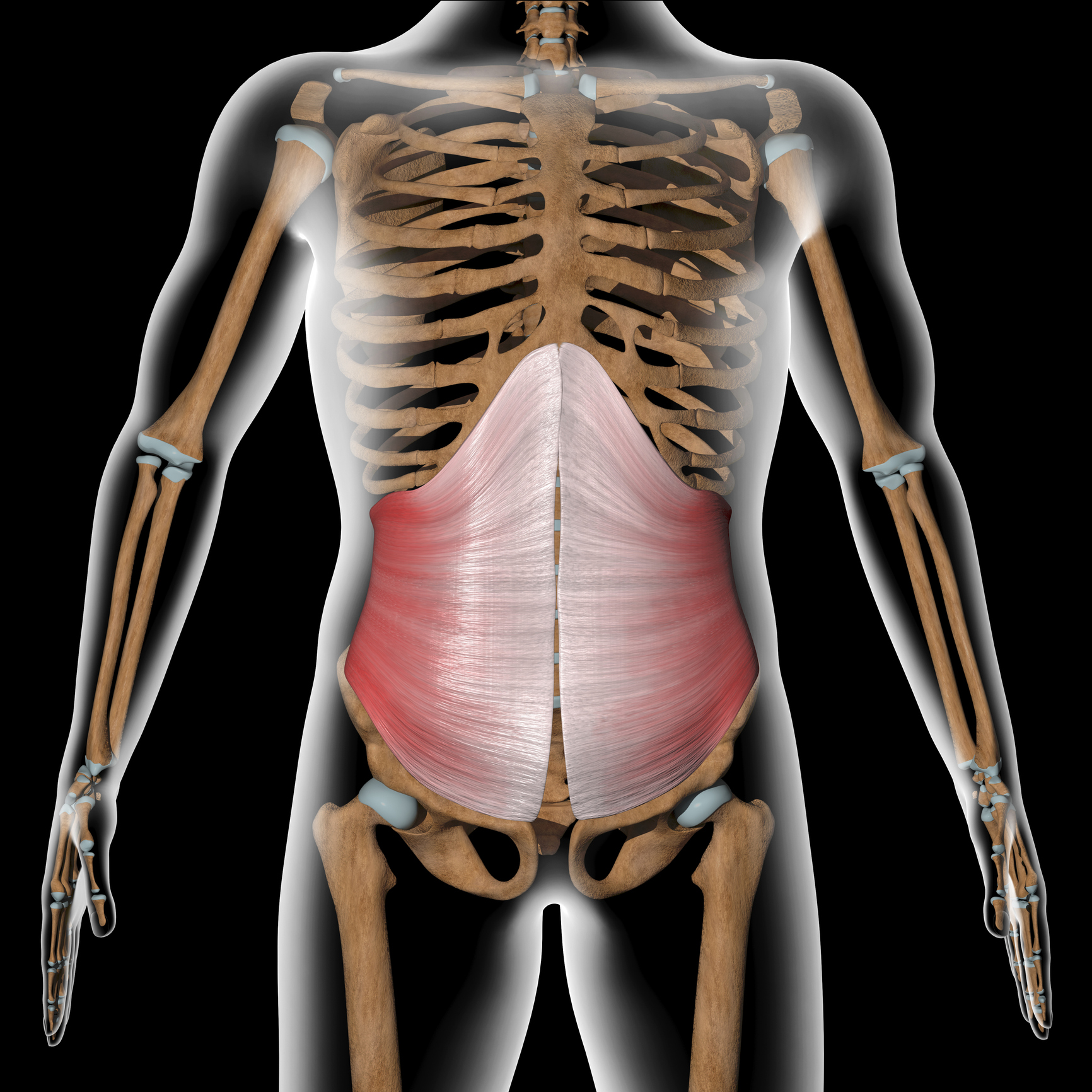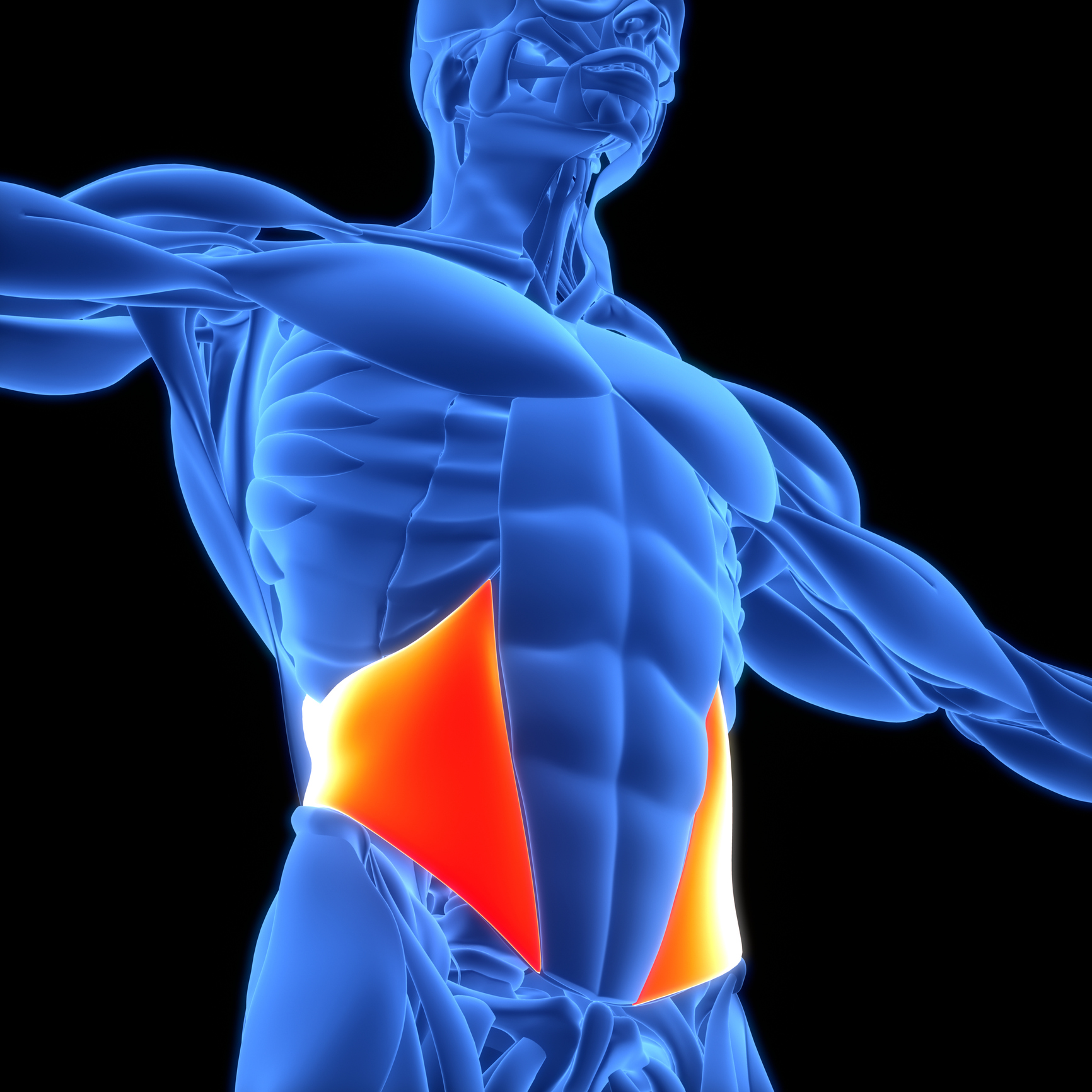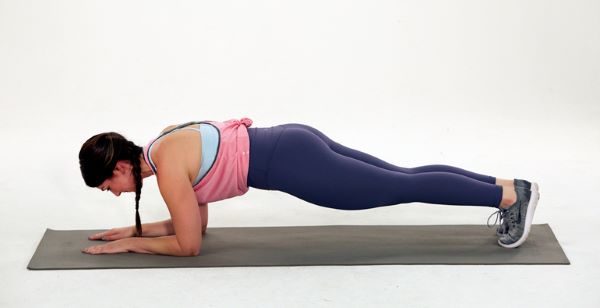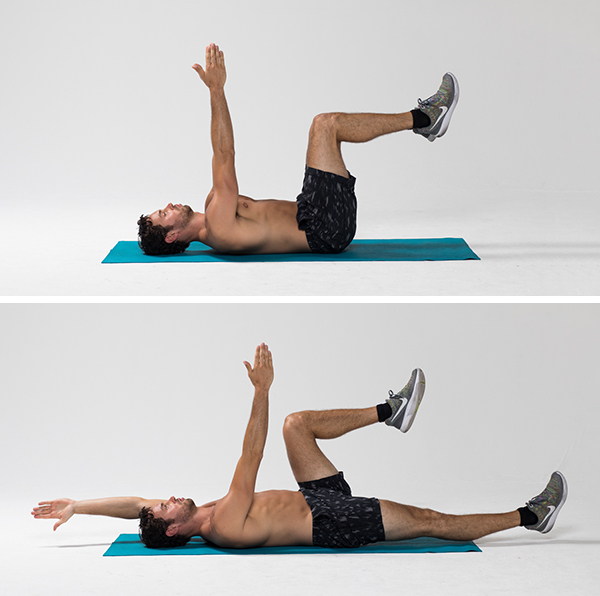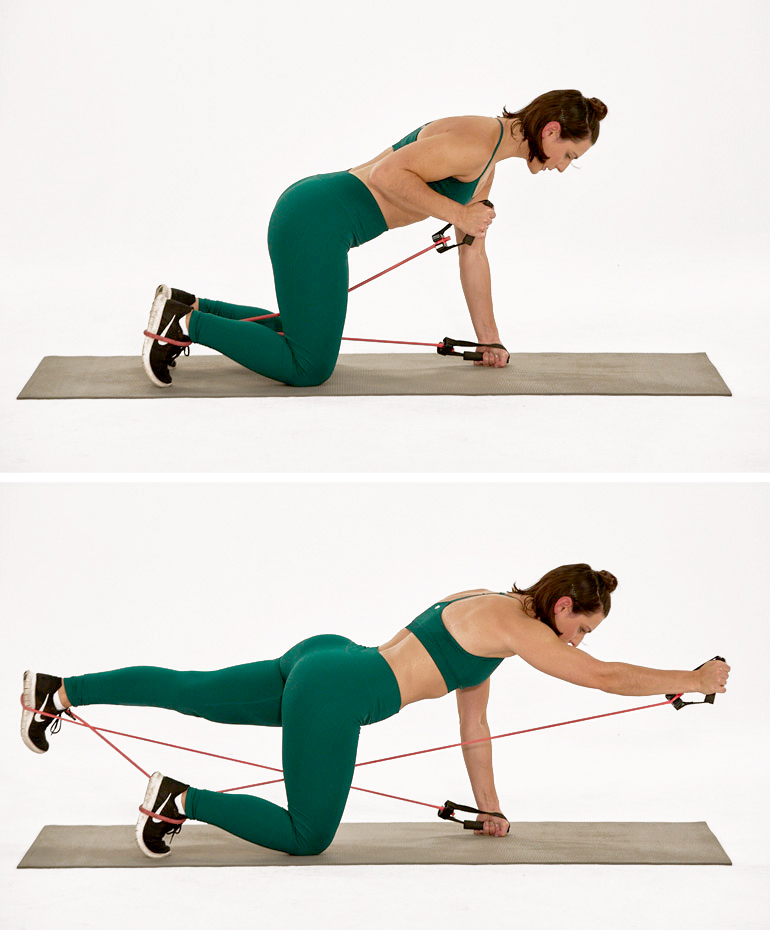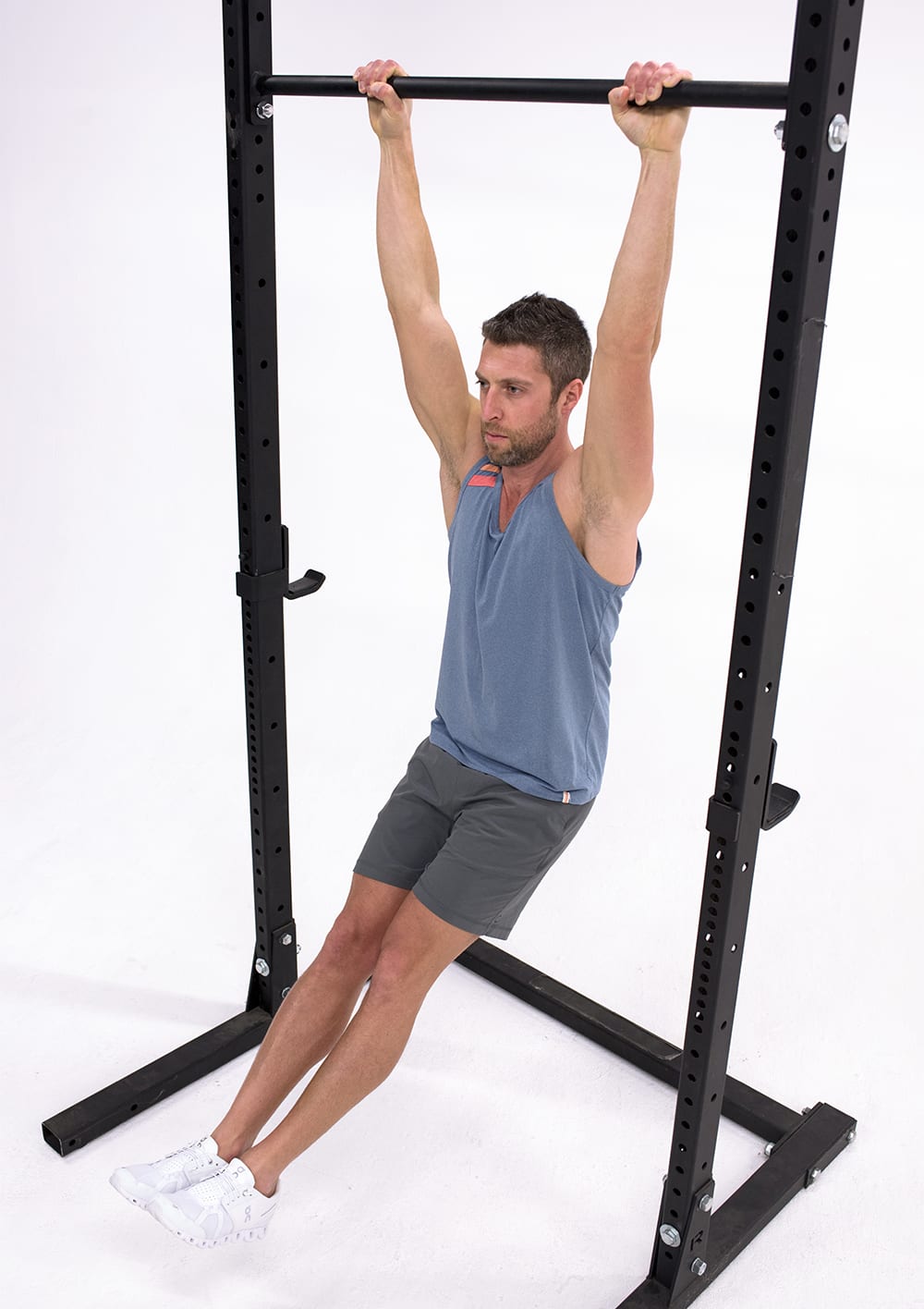The hollow body hold is less of an eye-catcher than all those fancy plank and sit-up variations you see on YouTube. But that doesn’t mean it’s less effective.
“The hollow body hold is an easy way to learn how to actually engage your body to maximum tension through the abs,” says Mark Schneider, CSCS, a strength coach in Minneapolis, MN.
That will not only help you build a solid midsection, but also translate into a stronger, more effective execution of bodyweight moves like pull-ups and push-ups, as well as weighted moves like squats and deadlifts.
In fact, when you do it right, the hollow hold is one of the most focused ab exercises you can perform. But the ab-defining devil is in the details. Here’s how to do a perfect hollow body hold.
Hollow Body Hold: Step-by-Step Instructions
- Lie on your back and assume a dead bug position: legs together, hips and knees bent 90 degrees, and arms extended toward the ceiling with your palms facing each other.
- Lift your shoulder blades off the floor and engage your core to press your lower back firmly into the floor.
- Keeping your head and shoulders lifted, lower your arms straight overhead as you simultaneously straighten and lower your legs. Only lower your arms and legs as far as you’re able to without your lower back rising off of the floor.
- Hold this position for as long as you can, breathing as smoothly as possible.
Trainer tip: Don’t lift your head too far in this move — just raise it an inch or two — and keep your attention on your abdomen.
“Think of zippering the bottom of your rib cage toward the front of your pelvis,” says Master Certified Trainer Billy Anderson, founder of Heroic Fitness Adventures, referring to how you should contract your abs. “That’s the most important part of the move.”
Hollow Body Hold Muscles Worked
In trainer-speak, the hollow hold is an anti-extension movement: It trains your core to resist extending or arching your lower back. That’s why it’s so critical to pin your lower back to the floor and keep it there throughout the move.
In so doing, you’ll train your core muscles to perform their primary job functions with greater skill and strength.
Rectus abdominis
Your six-pack muscle is primarily responsible for drawing your ribs and pelvis toward each other.
Transverse abdominis
As a deep core muscle, your transverse abdominis helps support and stabilize your spine — and keep your lower back from arching off of the floor during the hollow hold.
Obliques
The oblique muscles framing your abdominals help to pull your ribs downward, as well as help prevent rotating from side-to-side.
How to Progress the Hollow Body Hold
The hollow hold is the ultimate mind-muscle builder. Once you’ve mastered it, you should have a clear sense of what your abdominals do and how to properly activate them — an accomplishment in itself.
However, if you can hold the hollow position for at least 60 seconds with perfect form and want a greater challenge, you can make it more difficult by performing the exercise with one or two very light dumbbells in your hands (two pounds in each hand is plenty at first).
You can also squeeze a small Swiss ball or a very light medicine ball between your feet or knees. But again, keep it light — even a very small weight will feel heavy in this position.
Hollow Body Hold Alternatives
Mix some of these great core-building exercises into your routine to complement your hollow body practice.
1. Plank
The basic plank helps you learn how to engage and maintain tension with all of your core muscles, as well as your glutes, shoulders, back, and legs.
2. Dead bug
This move has you lowering and raising opposite limbs while maintaining maximum tension in your core.
3. Bird dog
Like the deadbug, you’ll lift and lower opposite limbs, but this time you’ll face the ground. Position a resistance loop around both thighs to make it more challenging.
4. Hollow body hang
Take the hollow body hold from the floor to the pull-up bar and you’ll build grip strength to boot.
